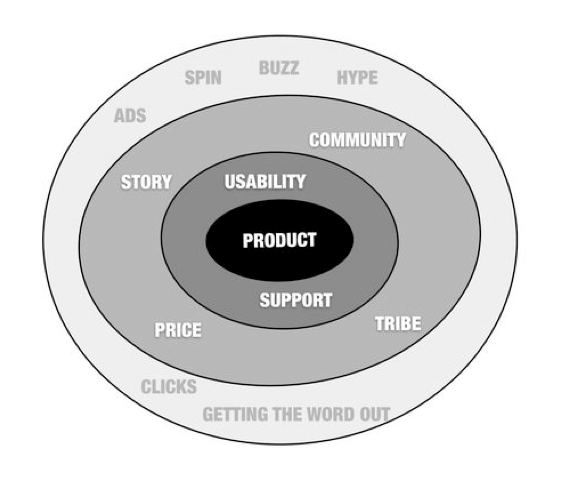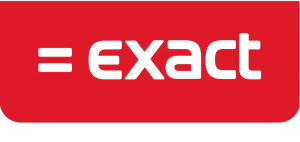Even the good guys are guilty of blinding us with marketing 2.0 buzzwords from time to time. ‘Tribes’ just sounds way cooler than ‘influencers’. ‘Worldview’ is much more groovy (man) than ‘issues or needs’. Seth Godin’s circles of marketing is a case in point.
Seth Godin’s circles of marketing
Seth says:
“Most amateurs and citizens believe that marketing is the outer circle. Marketing = advertising, it seems. The job of marketing in this circle is to take what the factory/system/boss gives you and hype it, promote it and yell about it.
But the next circle in has so much more leverage. Smart marketers in this circle acknowledge that their product or service isn’t for everyone, but bend over backwards to be sure that some people will be able to fall in love with it.”
Great insight. And the kicker:
Whenever your marketing isn’t working, go one circle in.
Fantastic advice. Especially for those marketers stuck in ‘ads, buzz and click’ land. So what’s actually in that second circle? What does Seth mean by ‘Tribe’, ‘Community’ and ‘Story’? Here’s my take.
What is a Tribe?
Tribes aren’t just another word for customer base. Tribes are Seth’s concept that helps explain influencer marketing tactics – drilled down to the deepest level.
If you had a stakeholder map of your key audiences then ‘tribes’ are the ones whose needs, desires, perceptions and beliefs (‘worldview’, as Seth calls it) best fit with what you have to offer (your value proposition).
They’re the (often slightly scary if you’re on the outside looking in) ones that hang on your every word. Spread your gospel with near religious fervour. But not everyone who is your customer or prospect is a member of your ‘tribe’.
What is a Community?
In your stakeholder map, a community sits one level out from your tribe. They may be customers, prospects, or even thought leaders. They share some of your worldview. Some of your interests. And engage with you. But they’re not the ones who go totally nuts spreading the gospel about your product or service.
You will not be able to ‘activate’ a community or ‘lead’ a tribe unless you tackle the third element in Seth’s second circle.
What is Story?
In this context, ‘Story’ is content. From a strategic communications perspective this is what you plan to say to your audiences. It’s your key messaging and argumentation.
Communities form around relevant and (what they consider) ‘valuable’ content. Think of the SME community built around the American Express sponsored business owner blog.
But bear in mind a tribe values different things from a community. They have different worldviews. So if you want to lead a tribe, you need to develop content based on what they value.
So how do you do all that?
Back to basics
Any strategic communicator (marketing, corp comms or other) should recognise ‘Audience, Message, Medium’. It’s my Holy Communications Trinity, and the most basic of communications models.
1. Audience:
- Identify all your prospects, customers and influencers
- Identify communities (based on shared worldviews)
- Prioritise core influencers (‘tribes’ with the best possible worldview match)
2. Message: Align your proposition to each stakeholder group and create content that triggers them to action (story)
3. Medium: deliver your content in the right format and channel
Just the other day I was asked by a senior communicator how to ‘harness the power of tribes’. My answer? Get back to basics. Substitute ‘tribes’ for key influencers. Substitute ‘worldview’ for issues and beliefs.
And develop great content – useful, informative that truly adds value to them. That’s really what sits at the heart of Seth’s second circle of marketing.















